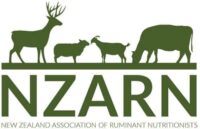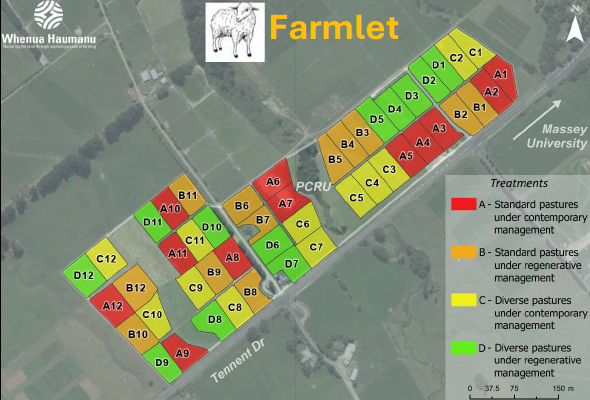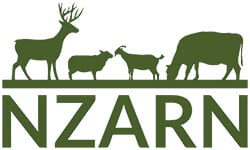Dr. Amelia Almeida is committed to advancing sustainable ruminant production systems and enhancing feed efficiency while minimizing environmental impact. Dedicated to fostering innovation and resilience in the next generation of animal scientists at Massey University. Her current research focuses on measuring and mitigating greenhouse gas emissions in ruminant production. Amelias mission is to empower students and researchers to advance the knowledge and practice of animal nutrition and GHG emissions, and to contribute to the sustainable development of the livestock sector.
Amelia kicked off with the key messages about the Whenua Haumanu project and the overview. Review some of the nutrition results and share the upcoming research for this project.
The why behind the project is to provide science-based evidence for the claims attributed to regenerative agriculture.
These farmlettes can range from 18-22 variations of plant species per sward. Both the impact of above the ground (impact on animals and performance – milk production and rumen function) and below the ground (the soil profile- nitrous oxide and soil bacterial DNA).
Loosely translates to “the breath of the land”. This is a 7-year long project. Where they start with all new pastures (tetraploid rye and w/c and r/c). the diverse mix is 19-21 different options. There is a sheep and a dairy part. There is lucerne on one of the systems.
There is a breadth of information that is being gathered. However, over the project timeline some of these things that are being measured has been dropped off.
Rye, Italian, clover (white, red, crimson), lotus, lucerne, meadow festuca, cocksfoot, tall fescue, timothy, plantain, chicory, vetch, sheep sorel. They currently have 7 species left. Rye, cocksfoot, timothy, red clover and white clover, chicory and plantain.
On the dairy unit, 3 farmlets (12ha) where 24 cows for the treatment farmletts (diverse), and the standard has 30 cows.
The sheep farm has 4 farmletts.
There is a Lincoln farmlett set up as well under Latin square design.
Each farmlett is independent. There is no cross over. Stocking rate drops off to allow for grazing residuals. For the regenerative systems, the desire is to have as long a rotation as possible. E.g. 60-65days verses the contemporary of 30-40days.
The dairy system includes the use of rumen boluses to review animal behaviour. There has been a note to see that there are less spikes on cows in the diverse pastures. This is proposed to be due to cows being able to select low heat generating species.
On the sheep block, sheep have wearables to review the frequency at which ewes are in close proximity of their lambs.
There has been extensive soil sampling to review soil DNA. 1432 different types of bacteria in the soil profiles. Basically 1,400 types of bacteria.
Nitrous oxide – 71 days of static chambers where urine applied to evaluate the potential Nitrous oxide.
Whats next? There are greenfeed monitors to set up int eh sheep unit to review the impact of Methane from the diverse pasture.
Almeida et al 2020 Meta-analysis on potential effects of some phytochemicals in ruminant nutritional traits.
NZARN members a copy of the presentation is available below if you are logged in.
Non-members looking for more information are encouraged to use our ‘contact a nutritionist’ form and ‘member directory’ to find a member who can help them answer their questions.
If you are a Rural Professional interested in joining the NZARN please see our ‘membership’ section.


